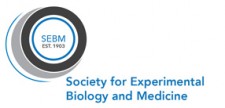Supporting Cells in the Heart Contribute to Cardiac Disease

WASHINGTON, April 9, 2018 (Newswire.com) - An article published in Experimental Biology and Medicine (Volume 243, Issue 7, April, 2018) reports that supporting cells in the heart, known as fibroblasts, are selectively activated by factors present in heart disease. The study, led by Dr. Megan McCain, Assistant Professor in the Department of Biomedical Engineering and Department of Stem Cell Biology and Regenerative Medicine at University of Southern California in Los Angeles, California, demonstrates that transforming growth factor-beta 1(TGF-b1), a chemical cue released from immune cells, is a dominant activator of cardiac fibroblasts, which promotes scar tissue formation.
Cardiovascular disease is currently the leading cause of death in the United States, and accounts for over $320 billion in medical expenditures each year. Myocardial infarctions, one of the most common forms of cardiovascular disease, results in localized death of muscle cells in the heart. Since heart muscle cells do not regenerate, scar tissue is formed at the site of injury. Scar tissue is synthesized by fibroblasts in response to chemical cues from immune cells and environmental stimuli, such as stiffness. Excessive scar tissue can ultimately reduce cardiac output and lead to heart failure. Thus, factors that regulate fibroblast activation may be leveraged for therapeutic purposes.
Understanding the relative contribution of TGF-β1 and matrix rigidity in driving fibroblast activation will allow us to discover new therapies for heart disease.
Nathan Cho, Co-author and graduate research assistant in the Department of Biomedical Engineering at University of Southern California
The present study by Dr. McCain and colleagues determined how mechanical (stiffness) and chemical (TGF-β1) cues independently and jointly activate cardiac fibroblasts. Primary human cardiac fibroblasts were grown on engineered substrates with three distinct rigidities in the presence or absence of TGF-β1. The results indicate that fibroblast activation is predominantly regulated by TGF-β1 when compared to matrix stiffness. Co-author Nathan Cho, graduate research assistant in the Department of Biomedical Engineering at University of Southern California said that "Understanding the relative contribution of TGF-β1 and matrix rigidity in driving fibroblast activation will allow us to discover new therapies for heart disease." Dr. McCain said that "Our data helps us understand how changes in the tissue environment that are associated with cardiac disease impact fibroblasts. Our next steps are to understand how the tissue environment impacts interactions between heart cells and fibroblasts."
Dr. Steven R. Goodman, Editor-in-Chief of Experimental Biology & Medicine, said "McCain and colleagues have defined TGF-β1 as the primary cue for myofibroblast differentiation. They further demonstrated that removal of TGF-β1 caused partial reversal returning to the fibroblast phenotype. This makes TGF-β1, and its Smad signaling pathway, interesting potential targets for reducing cardiac fibrosis after an infarct."
Experimental Biology and Medicine is a journal dedicated to the publication of multidisciplinary and interdisciplinary research in the biomedical sciences. The journal was first established in 1903. Experimental Biology and Medicine is the journal of the Society of Experimental Biology and Medicine. To learn about the benefits of society membership visit www.sebm.org. If you are interested in publishing in the journal, please visit http://ebm.sagepub.com.
Source: Society of Experimental Biology and Medicine
